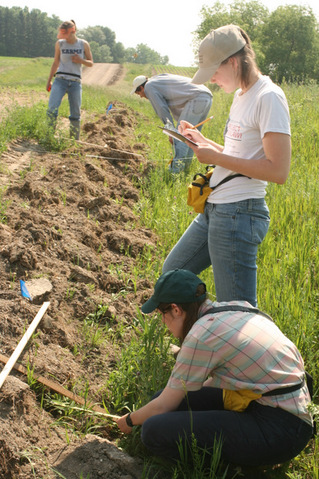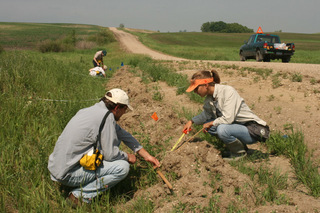Look at this paper to see some nice photos of Echinacea floral parts (Wist and Davis 2008).
|
||||
|
Here’s a file with plants that Allegra can use for her pollen interference/precedence experiment. These are all plants identified yesterday as going to flower in 2009. Plants are sorted according to priority order–random, except that plants from site of origin “Unknown” are given priority 1. I recommend going down the list and excluding all plants that don’t have at least two promising heads. Flag all included plants with labels 1, 2, 3, …. Stop when you have enough for your experiment. Ask Gretel which color flag to use. Blue is an option because your plants are in CG96 and Andrea’s are in CG97. Here’s Jennifer’s preliminary list of sites. She wants a total of ten sites and wants to sample from all that are asterisked. Populations for sampling Aa We have several microscopes and we would like to capture digital images of what we see–especially pollen grains. Which on should we pick? Any advice would be appreciated. Here are some links to pages about several models of inexpensive USB cameras that can mount to a microscope: microsope.com sells several brand. They sell only one line from bigC. Here’s a company that sells the EM series from bigC. documentation pages on the bigC product line (more on the AM series than the EM series). Another source of info on the Moticam line. I scanned this list of companies that sell (and used to sell) microscope accessories to find the above links. FYI I stumbled across some pollen identification keys: a taxonomic list, a key to pollen of the bahamas, and an inaccessible “pollen database” that sounds good. This file lists places to look for spittlebug spittle masses in the CG. At the top there are rows in the 99 garden and the 99S garden sorted randomly. Then all bigbatch rows (noted with end positions) are listed in a random order. Enjoy your search! Lots of plans for this week! Here are some highlights. This week we will start systematic observations of Echinacea flowering phenology in the CG experiment. We want to know the first and last day of flowering for every head of every Echinacea plant in the CG. The main event early in the week will be to put a twist tie on every head that looks like it will flower. We will also put a flag near every flowering plant with its location on the flag. We have to get the locations (plant ids) correct and get it into a database. As of Sunday, four plants in the CG had started to flower, how many left to go? We will also record flowering phenology at Staffanson Prairie Preserve. We will observe many fewer plants, but it’s a long walk. Under the supervision of DR, we will spend ~1h looking for more spittle masses on Ea in the CG. Jennifer and Diedre are coming from IL this Sunday and will stay for the week. They will help set up the phenology flags. They also plan to collect tissue from plants in several remnants to do a population genetic study using microsatellites (DNA markers). Daniel and Amy will make a plan for searching for aphids and juvenile plants in remnants. Caroline will fill us in on her plans. The competition of pollinators crew (M “floral neighborhoods” J, A “bee’s knees” G, K “style” G, A “the experimenter” H, and G “pollen from the source” D) will plan and practice for their project. Here are some things they will do… GPS (maybe): Daniel & Amy. What are we going to do about that tripod? Something to look forward to! I heard that Team Echinacea’s front steps are the best seats in town for the Kensington Runestone Days Parade. Here’s the schedule of events for this weekend. |
||||
|
© 2024 The Echinacea Project - All Rights Reserved - Log in Powered by WordPress & Atahualpa |
||||





